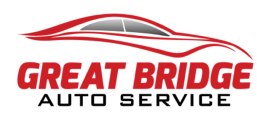
Nothing gets a day started off in the wrong direction than turning the ignition key and the vehicle remaining lifeless. The technicians at Great Bridge Auto Service are here to resolve your starter and ignition system issues quickly and get you back on the road!
Common Questions
What are signs of starter system problems?
1. Vehicle makes noises when trying to crank.
- rapid clicking
- grinding
- clunking/banging
- ticking
2. Engine cranks very slowly.
3. Turn the key and nothing happens.
What are the signs of ignition system problems?
1. Vehicle is backfiring.
2. Vehicle vibrates at idle or sputters under acceleration.
3. Vehicle is difficult to start.
4. Vehicle is not getting the gas mileage it should.
What are the signs of alternator problems?
1. Weak or dim headlights/interior lights
2. Grinding or whining sounds
3. Smell of burning rubber
4. Weak or dead battery
5. Dash warning lights will begin to come on.
What basic parts make up the starter and ignition systems?
1. Battery: The 12 volt electrical flow in your vehicle begins and ends with your battery.
2. Ignition Switch: When the key is turned the ignition switch allows voltage from the battery to flow to the ignition system.
3. Starter Solenoid: Electricity flows to the starter solenoid which then engages the starter.
4. Starter: The starter is an electric motor that has a cable connected directly to the battery and the starter solenoid. When the starter is engaged, most of the amps drawn is used to “start” the engine by transferring energy to a gear called the starter driver. The teeth from the starter driver fit over another gear called the ring gear that is located on a flywheel which is bolted to the engine crankshaft. As energy is transferred, the gears move causing the flywheel to spin and starting the crankshaft. The crankshaft then turns so the pistons can move up and down.
5. Ignition Coil: The ignition switch simultaneously sends the battery’s 12 volt current to the ignition coil. The coil acts like a transformer and changes the 12 volt current to 10,000 – 60,000 volt current. This high voltage is sent to ignite the spark plugs.
6. Spark plugs: The spark plugs’ job is to send sparks in the combustion chamber where the pistons are housed. Air and fuel are ignited in these chambers to create energy so your vehicle can move.
7. Alternator: Once the pistons are moving, the starter system disengages and the alternator takes over producing an electric current for your vehicle. This current not only is used for your engine, but to run the car radio, headlights, etc. It also recharges your battery so it will be ready to deliver the voltage needed at your next start.
8. Voltage regulator: The voltage regulator monitors the volts needed from the alternator to run the various operations of your vehicle. The more onboard systems being used – the A/C, heater, headlights, radio, etc. – the more volts required to run the vehicle.
9. Cables and wires: These direct the flow of electricity throughout the system. Connectors and fasteners at the end of cables and wires are prone to breaking. If these components aren’t in good working order, neither is your electrical system.
